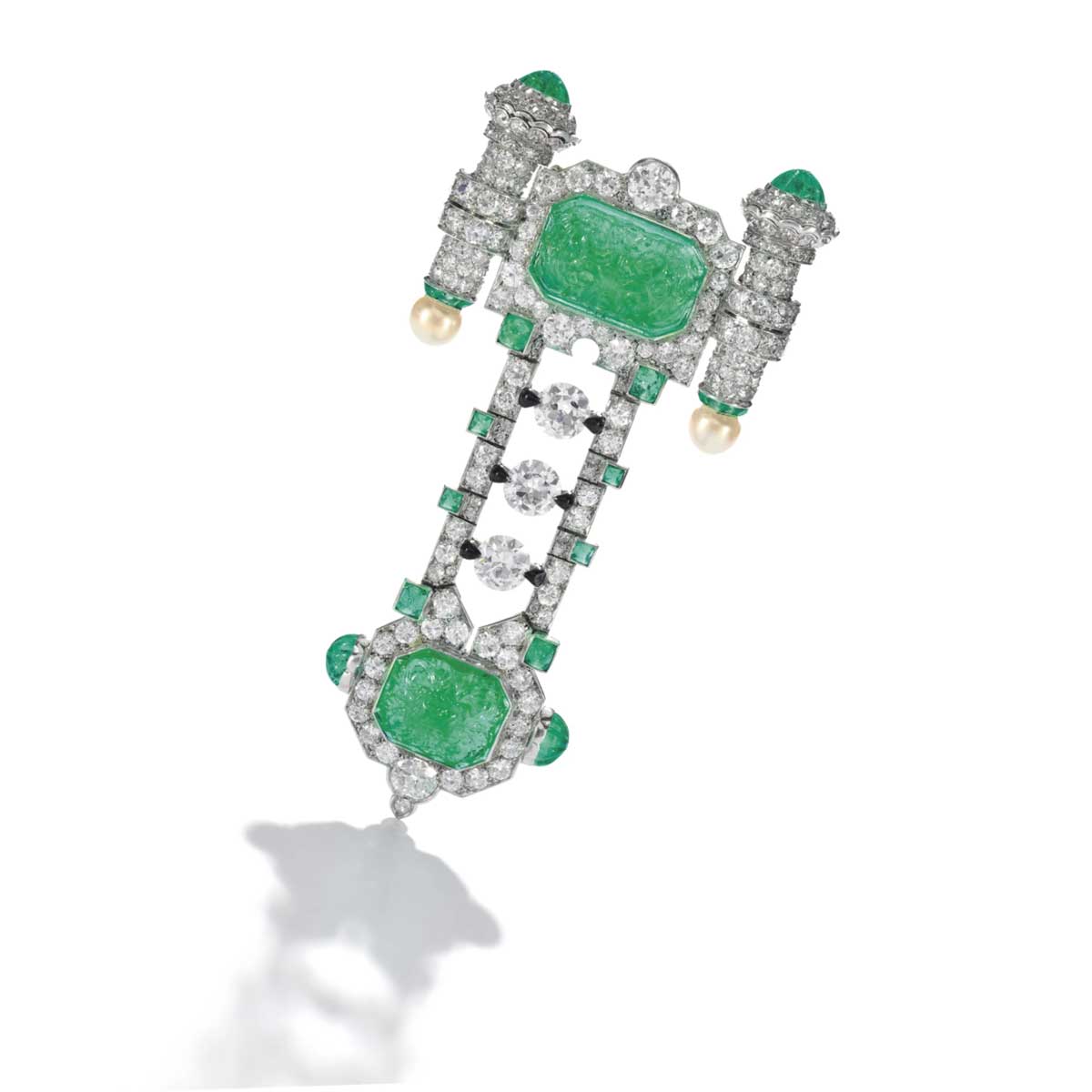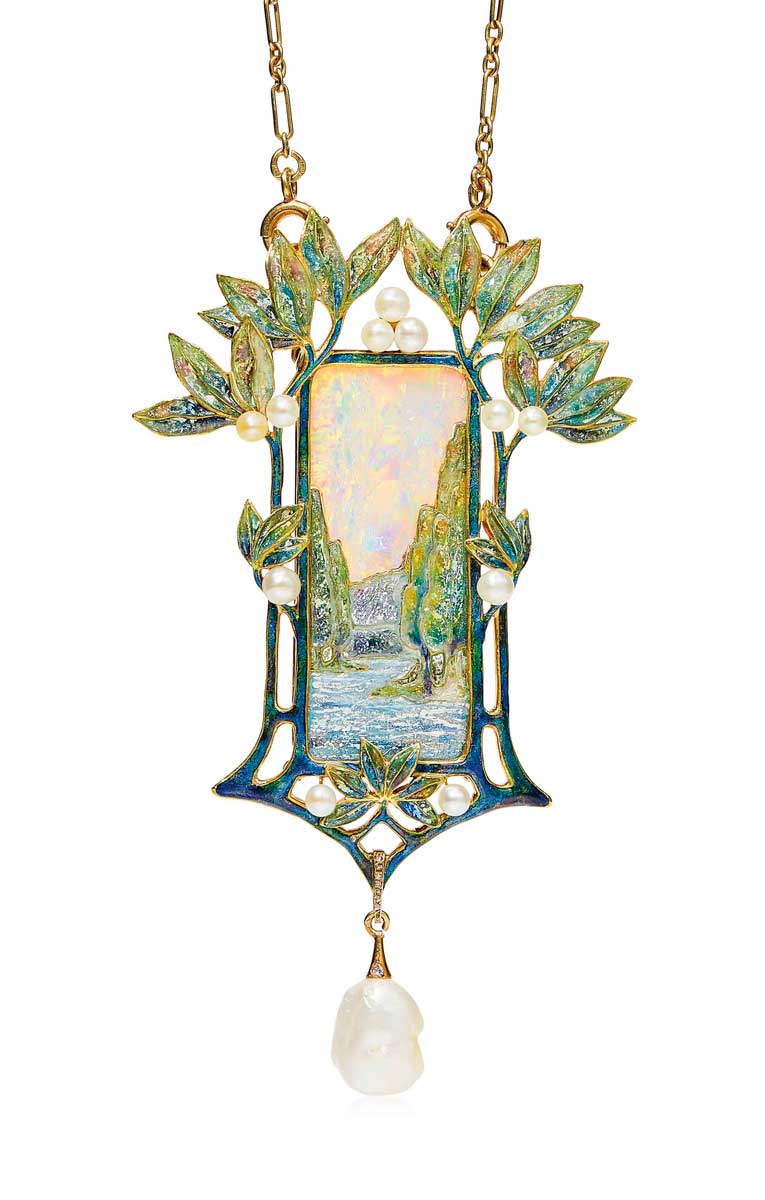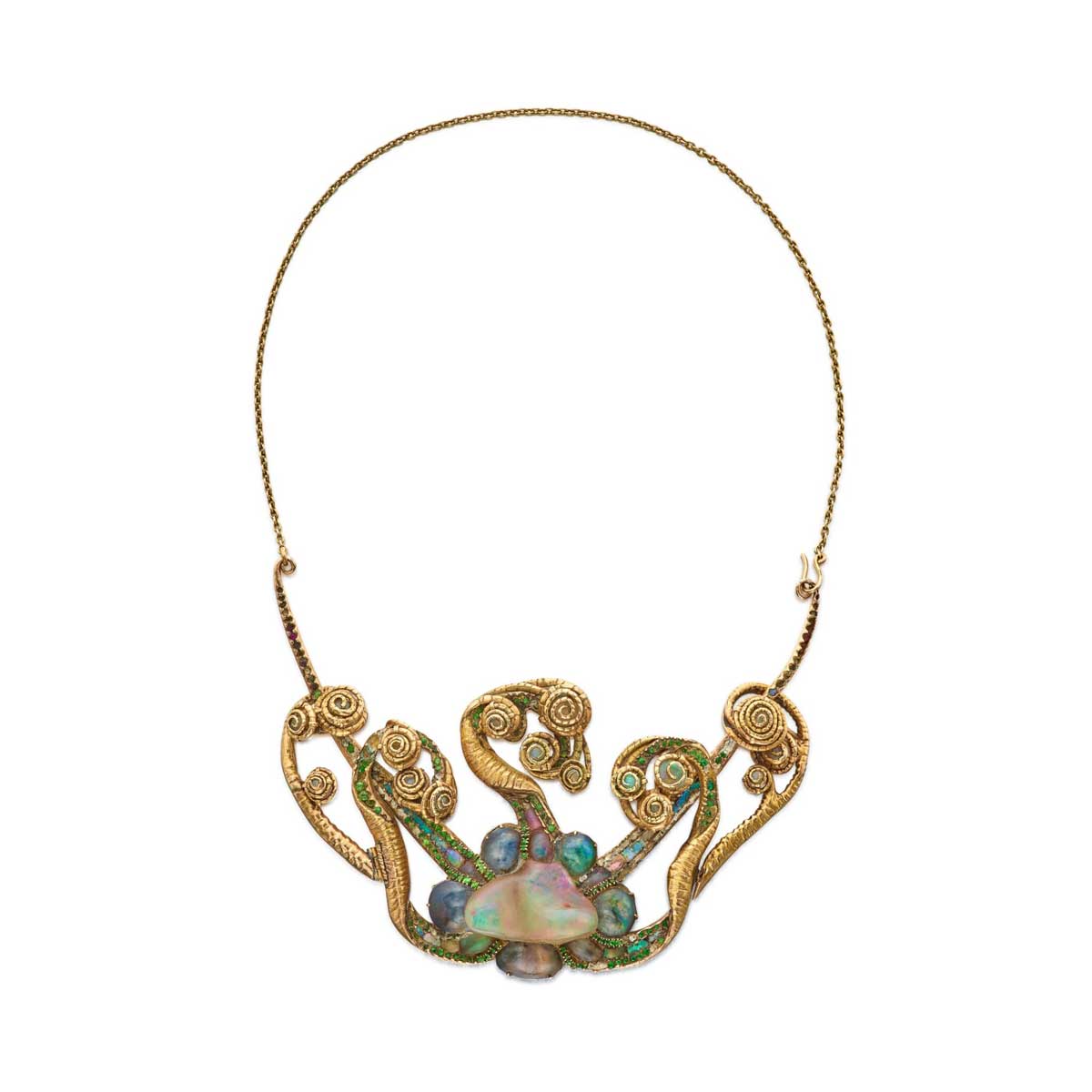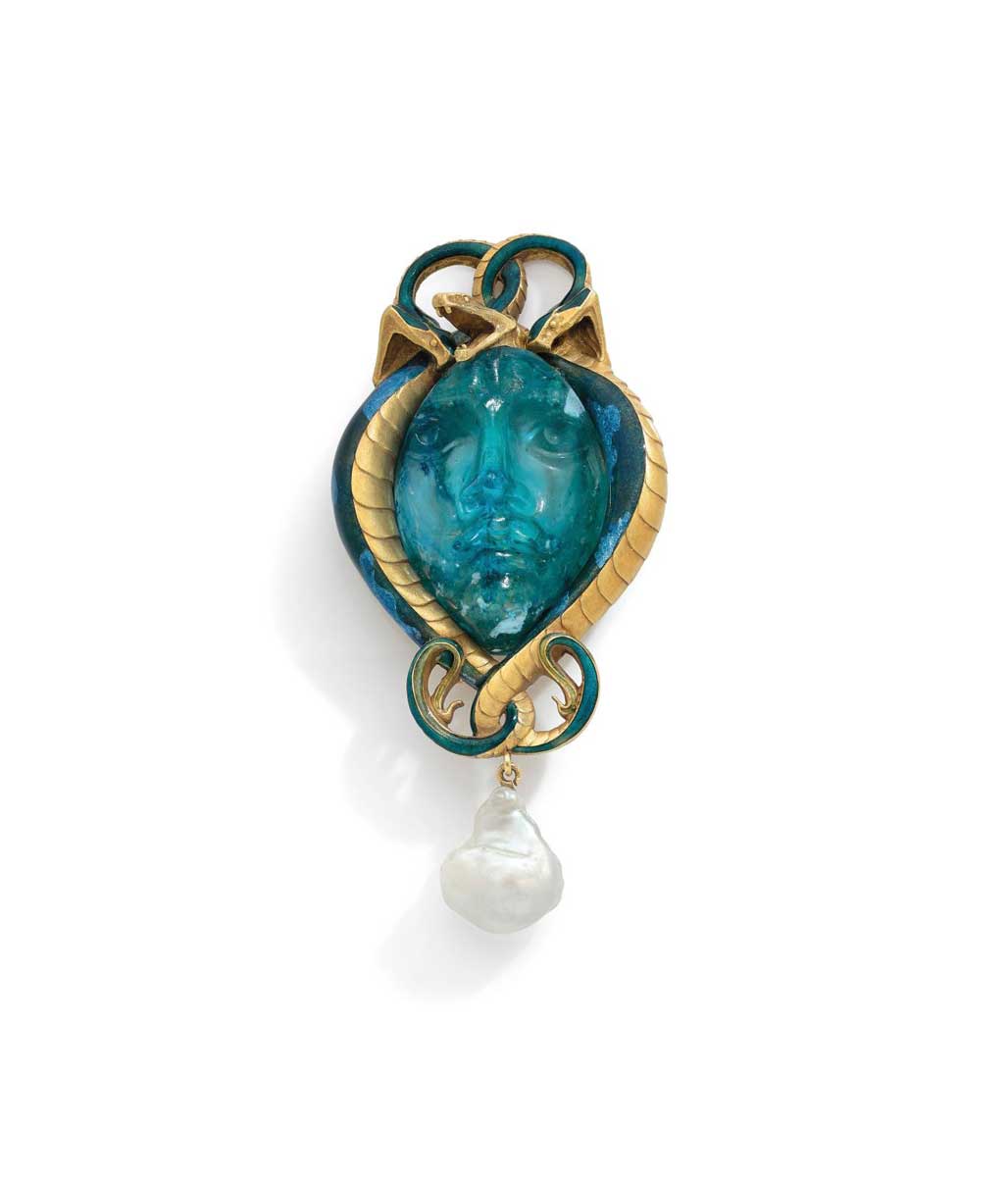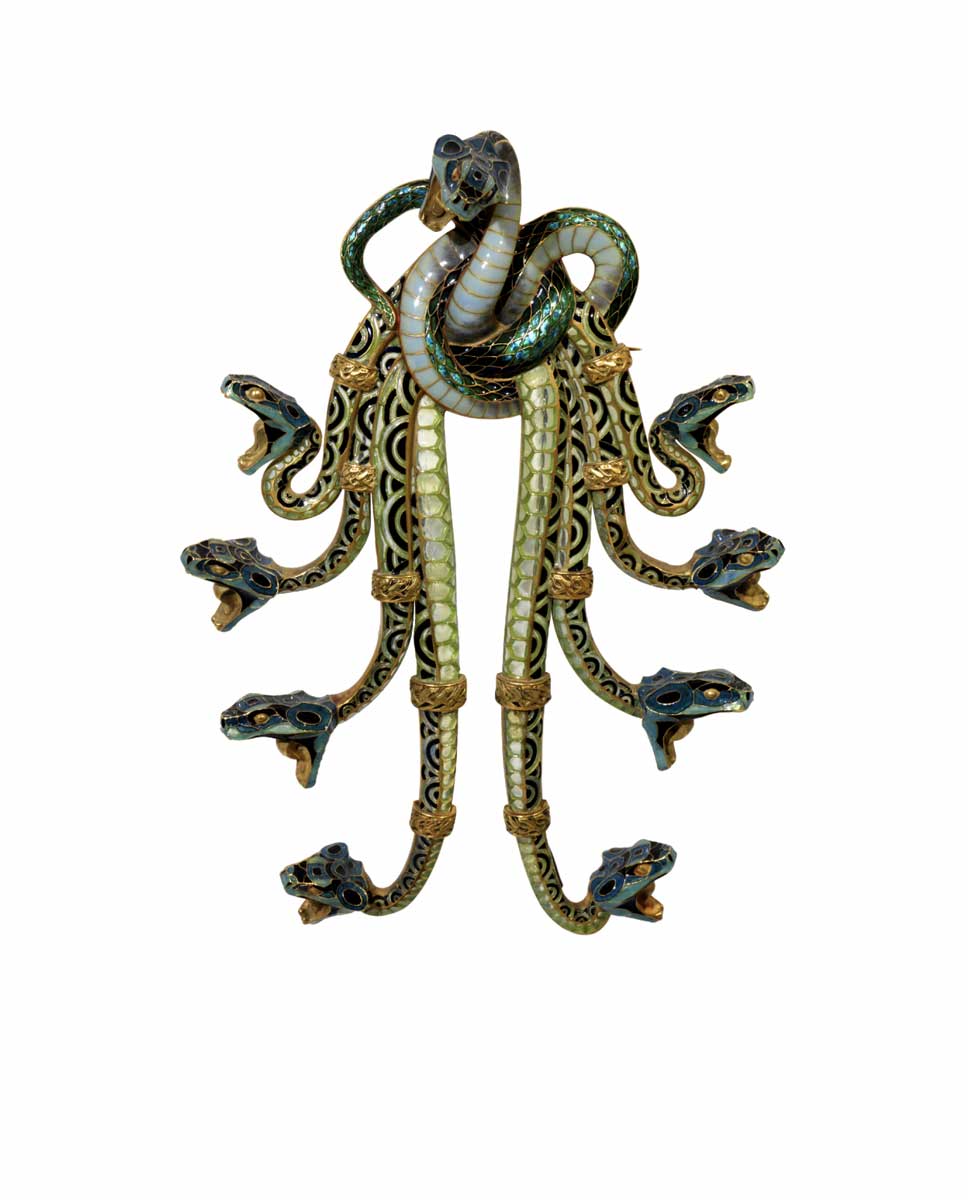Art Nouveau Jewelry: 7 Characteristics You Should Know
From intricate brooches to ornate necklaces, we explore the history behind the short-lived yet remarkable jewelry of the Art Nouveau period.
The exquisite style of Art Nouveau brooches and pendants is instantly recognizable. Their elaborate designs were supposed to not only imitate nature but surpass its beauty. Art Nouveau masters designed highly detailed, ornate objects as a response to ongoing industrialization, in order to show the true beauty of craftsmanship and one-of-a-kind creations. They employed innovative techniques and materials which continue to fascinate audiences today. Below are seven interesting facts about these lavish and unique objects.
1. What Is Art Nouveau?
Art Nouveau was a relatively short movement, lasting approximately from 1895 until the beginning of World War I in 1914. Nevertheless, it left a lasting impact on the history of Western art. Art Nouveau encompassed all possible genres of art and craft, including painting, textile design, jewelry making, architecture and more. All these approaches shared one aesthetic of elaborately decorated, nature-inspired compositions.
Art Nouveau was partially influenced by the Arts and Crafts movement, which opposed mass production, providing an alternative in the form of elaborately decorated handcrafted designs. Both movements were essentially radical responses to ongoing industrialization and humans losing touch with nature. When we talk about Art Nouveau we often refer to the French or Belgian branch of the movement, however, it was widespread all over Europe and even the United States and it did have some regionally distinctive traits.
2. The Difference Between Art Nouveau and Art Deco Jewelry
The difference between Art Nouveau and Art Deco styles is a subject of general confusion. However, if we understand the logic behind the aesthetic, we can easily tell one from another. While Art Nouveau was focused on imitating nature, its asymmetrical curvy lines, and floral ornaments, Art Deco was a celebration of the new industrial age, heavy machinery, and humanity surpassing nature.
While Art Nouveau designs usually present complex compositions, Art Deco pendants and brooches are in most cases centered around one gemstone, showing a perfectly symmetrical, angular composition of geometrical forms. A difference can also be seen in colors; Art Nouveau’s complex array of hues contrasts with the simple color schemes of Art Deco.
3. Which Materials Were Used?
Art Nouveau jewelry was groundbreaking partially due to its innovative approach to materials. Traditionally, Western jewelry was made mostly out of gold and precious stones, with the value of materials being the main criterion for the value of a finished piece. Art Nouveau, however, challenged that. While still using gold, masters like René Lalique and Georges Fouquet employed far more humble materials such as horn, jasper, amber, glass, and enamel. Thus, the focus shifted from the prestige of materials to craftsmanship and the artist’s skill.
Another unusual material was pearl, and in particular, a specific type. While most jewelry masters gave their preference to perfectly round identical natural pearls, Art Nouveau craftsmen chose baroque pearls of irregular shapes and shades, finding them more visually appealing and suitable for their complex compositions. Some artists deliberately and bluntly used imitations. For instance, one of the most popular ways to make an emerald was to cover a rock crystal with green gelatine. Horn, as mentioned earlier, was a cheap material produced from the horns of domestic cattle. It was relatively easy to cut, bleach or stain, while also being durable enough to use in jewelry. In most cases, it was used to imitate wigs of insects or sycamore seeds.
4. Who Were the Great Masters of Art Nouveau Jewelry?
René Lalique was perhaps one of the best-known Art Nouveau jewelers. Lalique frequently worked with fantasy female figures, the most prominent being sphinxes, sirens, and mysterious half-dragonflies. Georges Fouquet was also connected to another prominent Art Nouveau master. Fouquet hired the Czech painter Alphonse Mucha to renovate his boutique. This commission later led to numerous collaborations in the field of jewelry design.
Lucien Gaillard and his brother Eugene, a prominent designer of Art Nouveau furniture, belonged to a long dynasty of Parisian jewelers. Lucien was the one interested in Japanese culture and art. He even recruited Japanese craftsmen trained in ivory painting and lacquer, which was unusual at the time. Another name connected to the movement is Henri Vever.
Vever was inspired by the Renaissance style before turning to Art Nouveau. The influence of older styles he was interested in remained visible in his later works as well. Vever was not only a jewelry master but also a book author. His three-volume work on French jewelry in the nineteenth century is frequently referenced by historians. On the other side of the ocean, the most prominent name was Louis Comfort Tiffany, the founder of Tiffany & Co. Tiffany frequently worked with platinum but became widely known for his distinctive use of glass, which made his work instantly recognizable.
5. Cross-Cultural References in the Designs of Art Nouveau Jewelry
Art Nouveau was essentially a product of its age. Exhibitions of exotic plants, animals, and artifacts occupied the minds of the Western public, and the masters of Art Nouveau were ready to employ such rare beauty in their works. One of the most obvious cultural references can be noted in the use of Egyptian motifs. Thanks to Egyptomania that raged just several decades earlier and left a long-lasting impact on European culture, we can see influences of Egyptian iconography on Art Nouveau jewelry.
In France, one of the most prominent influences came from Japanese culture. This artistic trend is also known as Japonisme. The Japanese influence is visible not only in terms of style but in the approach to the subject matter. Similarly to Japanese artists, Art Nouveau’s masters did not turn away from the natural cycle of life. They were interested in showing seeds, full blossoms, and dried flowers. In the United States, Art Nouveau jewelry from Tiffany & Co often showed designs inspired by Byzantine iconography, while Scandinavian and British masters frequently made references to the folk art of their regions.
6. Art Nouveau and the Female Figure
One of the most prominent features of Art Nouveau is the use of feminine figures as another form of decoration. The romanticized image of a woman, frequently nude, was a symbol of closeness to nature, with sexual undertones. In a way, such imagery was a nod to Symbolism, a then-popular art movement that often showed women as sexualized symbols of uncontrolled nature, referring simultaneously to their allure and danger.
Medusa, a creature from Greek mythology, frequently featured in Art Nouveau jewelry. According to legends, Medusa was cursed by the gods and had a horrifying ability to turn anyone to stone with her gaze. Other dangerous and sexualized feminine creatures noticeable in Art Nouveau objects include sphinxes, sirens, and mermaids.
7. A Darker Undertone: Art Nouveau Jewelry and Decadence
However cheerful and ethereal Art Nouveau jewelry might look at first glance, there is often an element of darkness lurking beneath. This was partly because of the Decadence movement. Decadence was essentially a movement expressing disappointment in the present and disbelief in the future, focused on themes of death, decay and artificiality. In one of the most prominent decadent novels of the time A Rebours (Against Nature) (1884) by Karl-Joris Huysmans, the main character, bored and disenchanted with real life around him, tries to create something beautiful by adorning a living tortoise’s shell with jewels. The animal eventually dies from the excessive weight on its back, once again proving the futility of humans’ attempts to alter the world to their liking.
Echoes of this philosophy can be found in many Art Nouveau jewelry items, particularly those with colorful insects and fantasy flowers incorporated into the composition. Another hint of underlying darkness can be found in images of bats, snakes, moths, and spiders, frequently present on Art Nouveau brooches and pendants. These dangerous and repulsive creatures were connected to topics like death and illness, as well as threats coming from the world around us.




